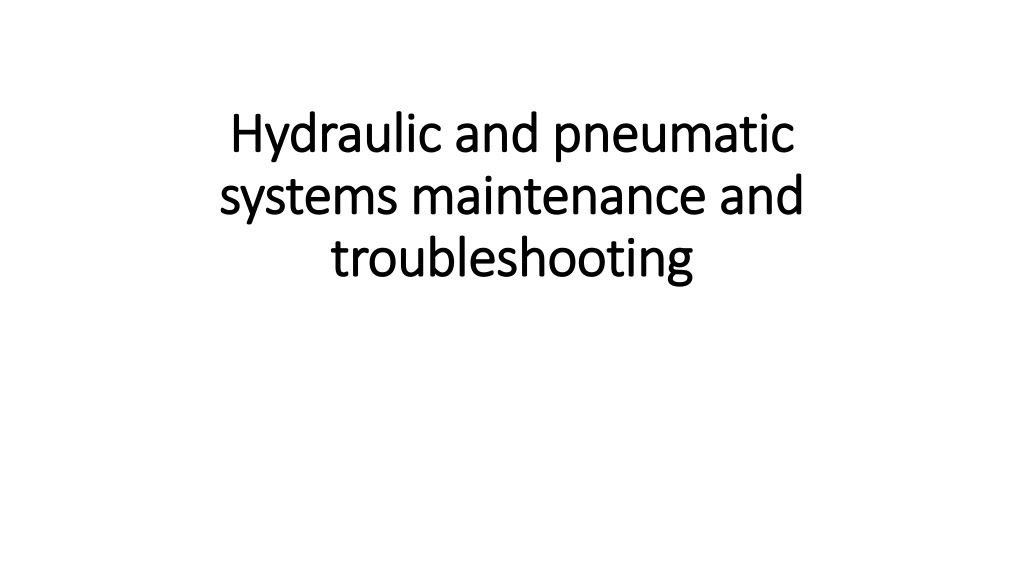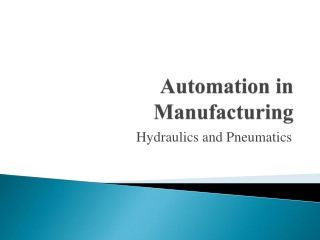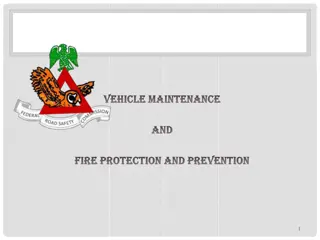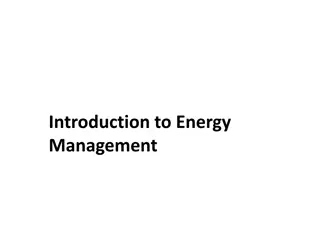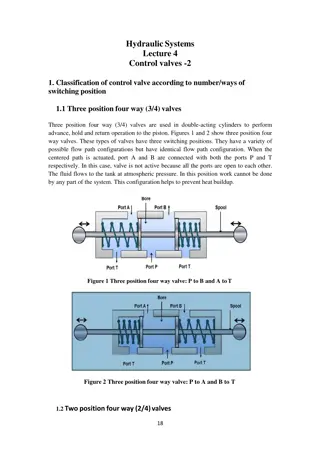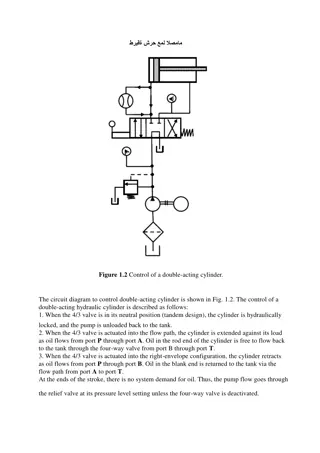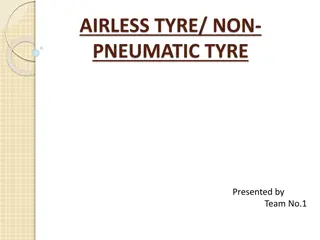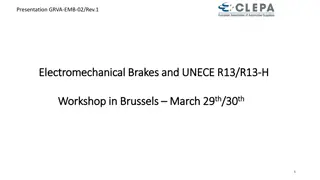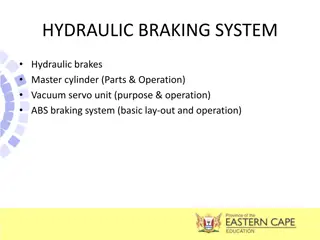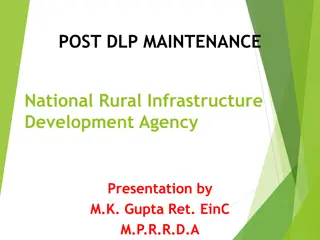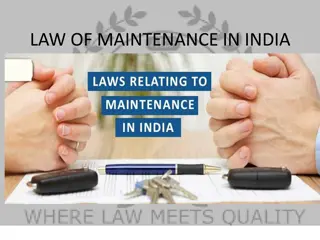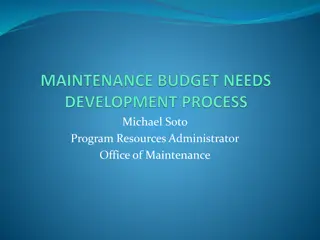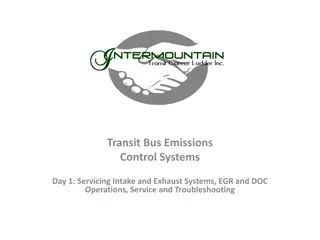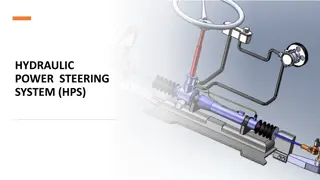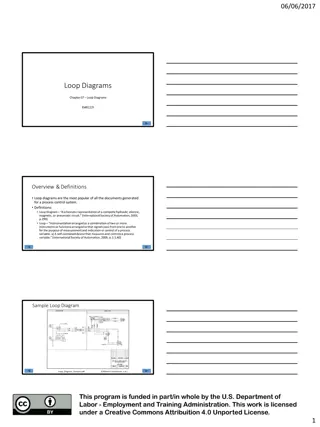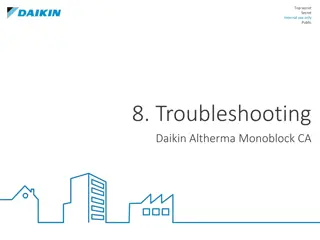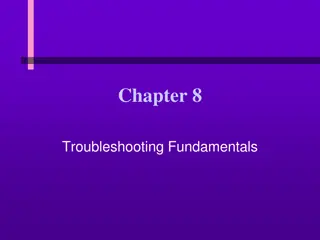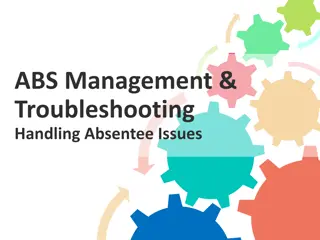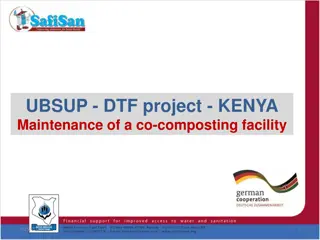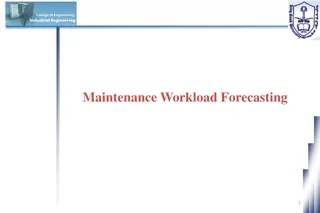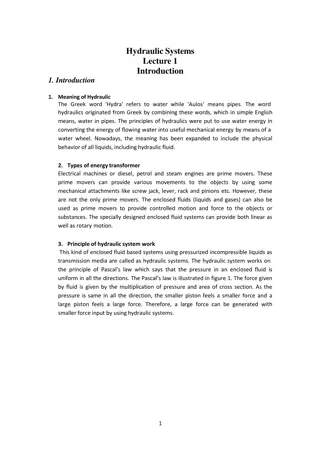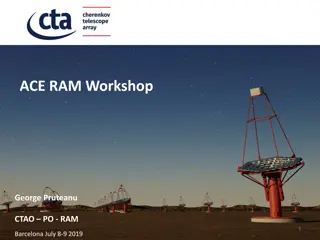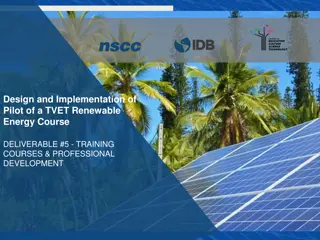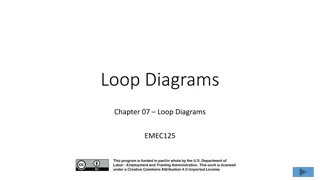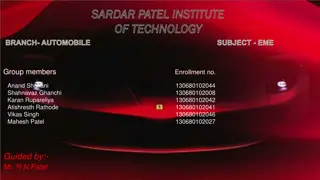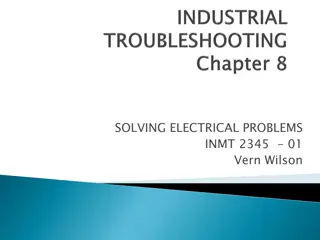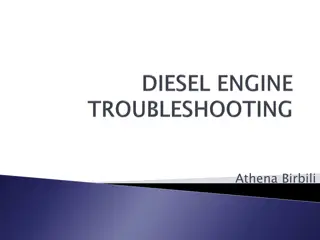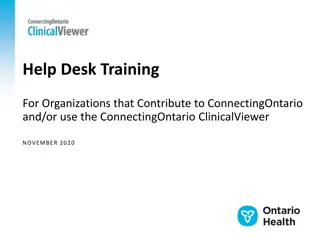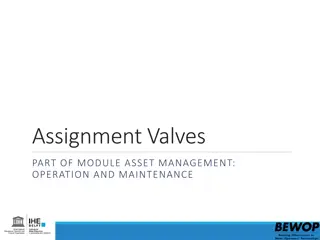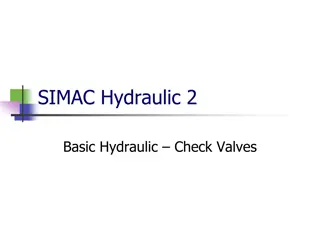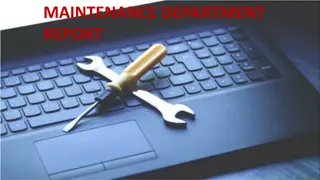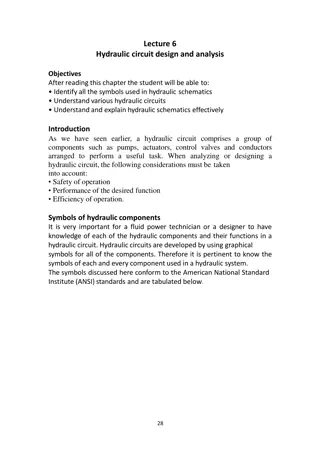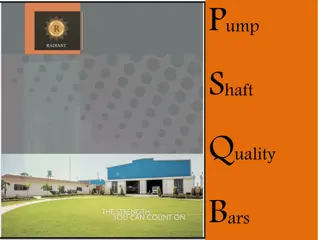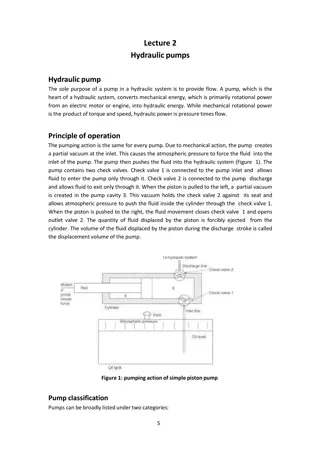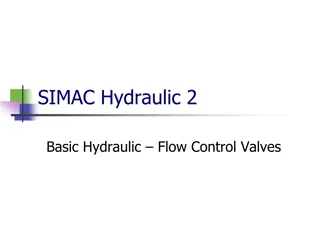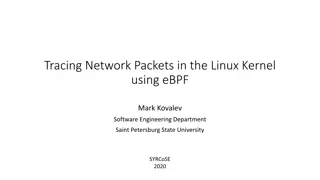Hydraulic and Pneumatic Systems Maintenance and Troubleshooting
Understanding hydraulic system failures and breakdown causes, preventive maintenance practices, the importance of sealing devices, troubleshooting techniques, and effects of fluid contamination and entrained gas in hydraulic systems.
Download Presentation

Please find below an Image/Link to download the presentation.
The content on the website is provided AS IS for your information and personal use only. It may not be sold, licensed, or shared on other websites without obtaining consent from the author. Download presentation by click this link. If you encounter any issues during the download, it is possible that the publisher has removed the file from their server.
E N D
Presentation Transcript
Hydraulic and pneumatic Hydraulic and pneumatic systems maintenance and systems maintenance and troubleshooting troubleshooting
Objectives After part the student will be able to: Understand and explain the various causes for failure in a hydraulic system Carry out preventive maintenance of system Understand the functions and importance of sealing devices in a hydraulic system Carry out preliminary troubleshooting activities for determining the causes of malfunctioning in a hydraulic system.
Common causes for hydraulic system breakdown Common causes for hydraulic system breakdown The most common causes of hydraulic system failures are: Clogged and dirty oil filters An inadequate supply of oil in the reservoir Leaking seals Loose inlet lines, which cause pump cavitations and eventual pump damage Incorrect type of oil Excessive oil temperature Excessive oil pressure.
The three maintenance procedures that have the The three maintenance procedures that have the greatest effect on system life, performance and greatest effect on system life, performance and efficiency are: efficiency are: 1. Maintaining an adequate quantity of clean and proper hydraulic fluid with the correct viscosity 2. Periodic cleaning and changing of all filters and strainers 3. Keeping air out of the system by ensuring tight connections.
The phenomenon of wear due to fluid contamination The phenomenon of wear due to fluid contamination Excessive contaminants in the working fluid prevent proper lubrication of components such as pumps, motors, valves and actuators. This can result in wear and scoring which affect the performance and life of these components and leads to their eventual failure. A typical example of this is the scored piston seal and cylinder bore of cylinders causing severe internal leakage and resulting in premature cylinder failure.
Problems due to entrained gas in fluids Problems due to entrained gas in fluids Entrained gas or gas bubbles in the hydraulic fluid is caused by the sweeping of air out of a free air pocket by the flowing fluid and also when pressure drops below the vapor pressure of the fluid. Vapor pressure is that pressure at which the fluid begins changing into vapor. It increases with increase in temperature. This results in the creation of fluid vapor within the fluid stream and can in turn lead to cavitation problems in pumps and valves. The presence of these entrained gases causes unstable operation of the actuators.
cavitation cavitation The phenomenon of cavitation is in fact the formation and subsequent collapse of the vapor bubbles. This collapse of the vapor bubbles takes place when they are exposed to the high-pressure conditions at the pump outlet, creating very high local fluid velocities, which impact on the internal surfaces of the pump. These high-impact forces cause flaking or pitting on the surface of components such as gear teeth, vanes and Pistons leading to premature pump failure. Additionally the tiny metal particles tend to enter and damage other components in the hydraulic system.
Cavitation Cavitation Cavitation can result in increased wear on account of the reduced lubrication capacity. Cavitation is indicated by a loud pump noise and also by a decreased flow rate as a result of which the pressure becomes erratic. Air also tends to get trapped in the pump line due to a leak in the suction or on account of a damaged shaft seal. It has to be ensured that air escapes through the breather while the fluid is in the reservoir or otherwise it tends to enter the pump suction line. The following steps are recommended by manufacturers to counter the phenomenon of cavitation in pumps : 1. Suction velocities to be kept below 1.5 m/s 2. Pump inlet lines to be kept as short as possible 3. Pump to be mounted as close to the reservoir as possible 4. Low-pressure drop filters to be used in the suction line 5. Use of a properly designed reservoir that will help remove the trapped air in the fluid 6. Use of hydraulic fluid as recommended by the manufacturer 7. Maintaining the oil temperature within prescribed limits, i.e. around 65 C
Safety Safety Hydraulic and pneumatics are no less dangerous but tend to be approached in a far more laissez faire or casual manner. A hydraulic system can present the following dangers to an operator: High-pressure air or oil released suddenly can attain explosive velocities and can easily cause an accident. The unexpected movement or drift of components such as cylinders can be harmful. Spilt hydraulic oil is very slippery and can cause accidents. .
A few guidelines to ensure safety in hydraulic systems are listed here: A few guidelines to ensure safety in hydraulic systems are listed here: Anything that can move with change in pressure as a result of your actions should be mechanically secured or guarded. Particular care should be taken with regard to suspended loads. It must be remembered that fail-open valves will turn ON when the system is de-pressurized. Never disconnect pressurized lines or components. The whole system should be de-pressurized before disconnecting any of the lines. Put up safety notices to prohibit operation by other people. Ensure that the accumulators in the hydraulic system are fully blown down. Make proper arrangements to prevent spillage of oil on the floor. Where there is an electrical interface to a hydraulic system (e.g., solenoids, pressure switches, limit switches) the control circuit should be isolated, to reduce the risk of electric shock and to reduce the possibility of fire. After the work is completed, keep the area tidy and clean. Check for any leakages and confirm correct operation of the system. Many components contain springs under pressure. If released in an uncontrolled manner, these can fly out at high speed and cause injury. Springs should be removed with utmost care
Cleanliness Cleanliness Most hydraulic and pneumatic faults are caused by dirt. Very small particles can nick seals, abrade surfaces, block orifices and cause valve spools to jam. Ideally components should not be dismantled in the usual dirty conditions found on site. These should be taken to a clean workshop equipped with proper workbenches. Components and hoses come from manufacturers with their orifices sealed with plastic plugs, to prevent dirtngress during transit. Filters should be regularly checked and cleaned or changed when required. Oil, which is dirty, oxidized or contaminated, forms a sticky gummy sludge which blocks small orifices and causes the valve spools to jam. The oil condition should be regularly checked and the suspect oil changed before problems develop
Preventive maintenance The most important part of the maintenance department's responsibility is to perform routine planned maintenance otherwise known as preventive maintenance. Preventive maintenance primarily deals with: Regular servicing of the equipment Checking for correct operation Identification of potential faults and their immediate rectification or correction.
Preventive maintenance For preventive maintenance techniques to be really effective, it is necessary to have a good reporting and recording system. These reports should include the following: The type of symptoms encountered and how they were detected along with the respective date A description of the maintenance repairs performed. This should include the replacement of parts, the amount of downtime and the date Records of dates when the oil was tested, added or changed Records of dates when the filters were cleaned or replaced.
Static seal flange joints Dynamic seals are subject to wear and tear as one of the mating parts rubs against the seal. The most widely used seals of this type are: O-rings Compression packings Piston cup packings Piston rings Wiper rings.
Excessive noise Excessive noise can result from: 1. Problems related to wear and misalignment 2. Pump cavitation or the presence of air in the hydraulic fluid 3. Presence of contaminants in the hydraulic fluid that may cause a relief valve to chatter and produce noise 4. Low reservoir levels and contaminated filters 5. Excessive drive speed and loose intake lines 6. High fluid viscosity and 7. Damaged or worn couplings
Incorrect flow Incorrect flow The following are a list of common causes that might lead to incorrect pressure conditions in a hydraulic circuit: 1. Improper reservoir level 2. Dirty, clogged filters and strainers 3. Clogged inlet line 4. Defective pump 5. Leaky connections and the presence of air in the system 6. Damaged or misaligned couplings 7. Defective control valves.
Incorrect pressure Incorrect pressure Incorrect pressure conditions can result from: 1. Contaminated hydraulic fluid and clogged filters 2. Improper reservoir level and presence of air. When troubleshooting hydraulic systems, it should be kept in mind that the pump produces fluid flow. However there must be resistance to flow in order to have a pressure. The following is a list of hydraulic system operating problems and the probable causes, which should be investigated during troubleshooting.
Trouble shooting for incorrect pressure Remedies: (a) Change dirty filters. Replace hydraulic fluid (b) Tighten leaky connections, fill reservoir to proper level and carry out bleeding of the system (c) Gas valve to be checked for leakage, charged to correct pressure and overhauled, if defective (d) Adjust (e) Overhaul or replace. 5. Faulty operation
Probable Causes of Noisy pump (a) Air entering the pump inlet (b) Misalignment of the pump (c) Excessive oil viscosity (d) Dirty inlet strainer (e) Chattering relief valve (d) Damaged pump (f) Excessive pump speed (g) Loose or damaged inlet.
Probable Causes of No pressure (a) Pump rotating in the wrong direction (b) Ruptured hydraulic line (c) Low oil level in the reservoir (d) Pressure relief valve malfunctioning (e) Full pump flow by-passed to the tank due to faulty valve.
Probable Causes of Low or erratic pressure Probable Causes of Low or erratic pressure (a) Air in the fluid (b) Pressure relief valve set too low (c) Pressure relief valve not properly seated (d) Leak in the hydraulic line (e) Defective or worn-out pump (f) Defective or worn-out actuator.
Troubleshooting instruments Troubleshooting instruments Hydraulic systems depend on proper flow and pressure from the pump to provide the necessary actuator motion for producing useful work. The measurement of flow and pressure are two important means of troubleshooting a hydraulic system. Temperature is the third important parameter measured periodically as it affects the viscosity of oil. The use of flowmeters can help in determining whether or not the pump is producing the proper flow.
High fluid temperature High fluid temperature A fluid temperature above 82 C (180 F) damages seals and reduces the life of the fluid. At higher temperatures, inadequate lubrication due to lower fluid viscosity causes damage to the system components. To avoid system damage due to overheating, it is important that a temperature alarm is fitted in the system
Probable Causes of : Actuator fails to move (a) Faulty pump (b) Direction control valve fails to shift (c) System pressure too low (d) Defective actuator (e) Pressure relief valve stuck open (f) Actuator load is excessive (g) Check valve installed in the reverse direction.
Slow or erratic motion of the actuator Slow or erratic motion of the actuator (a) Air in the system (b) High viscosity of the fluid (c) Worn or damaged pump (d) Pump speed too low (e) Excessive leakage through actuators (f) Faulty or dirty flow control valves (g) Blocked air breather in the reservoir (h) Low fluid level in the reservoir (i) Faulty check valve (j) Defective pressure relief valve.
Overheating of hydraulic fluid causes (a) Heat exchanger turned off or clogged (b) Undersized components or piping (c) Incorrect fluid (d) Continuous operation of pressure relief valve (e) Overloaded system (f) Dirty fluid (g) Reservoir too small (h) Inadequate supply of oil in the reservoir (i) Excessive pump speed (j) Clogged or inadequate sized air breather. of hydraulic fluid
Incorrect fluid viscosity Incorrect fluid viscosity Generally, optimum operating efficiency is achieved with a fluid viscosity in the range of 16-36 est. Maximum bearing life is achieved with a minimum viscosity of 25 est. A very high fluid viscosity may damage the system components through cavitation, while low fluid viscosity may result in damage through inadequate lubrication
Fluid contamination Fluid contamination Contamination of the hydraulic fluid may occur on account of the influence of air, water, solid particles or any other matter that impairs the function of a fluid. Air contamination can result in damage to the system components through loss of lubrication, overheating and oxidation of seals. Common entry points for air contamination include the vortex effect at the pump suction (due to low reservoir oil level) or faulty seals. To avoid this, the reservoir oil level should always be maintained at the desired level. Water contamination can result in damage to the system components through corrosion, cavitation and altered fluid viscosity. In order to avoid this, ensure that all possible points of penetration into the reservoir oil space are sealed. Also ensure that the maximum oil level is maintained, to minimize condensation within the reservoir. Contamination from solid particles can result in damage to the system components through abrasive wear or can be generated internally. Common entry points of particle contamination are through the reservoir air space and on the surface of the cylinder rods.
To reduce the contamination load on the system's To reduce the contamination load on the system's filters, the following measures should be undertaken: filters, the following measures should be undertaken: All penetration points into the reservoir airspace must be sealed and an air filter of 5 installed in the breather. The chrome surfaces of the cylinder rods must be made free from pitting, dents and scoring. The filters should be replaced regularly and fluid contamination levels monitored through regular sampling.
